From Quick EV to Track-Ready Super Sedan: Leveling up the Tesla Model 3 Performance with Mountain Pass Performance Suspension
We’ve covered in the past how at today’s lower-than-ever prices Tesla Model 3 Performance makes for a very intriguing entry into the enthusiast daily driver segment. Getting past the obvious difference of it being electric versus gasoline powered, the Model 3 Performance can easily outgun similarly priced sedans and hatchbacks when it comes to acceleration and 1/4 mile times.
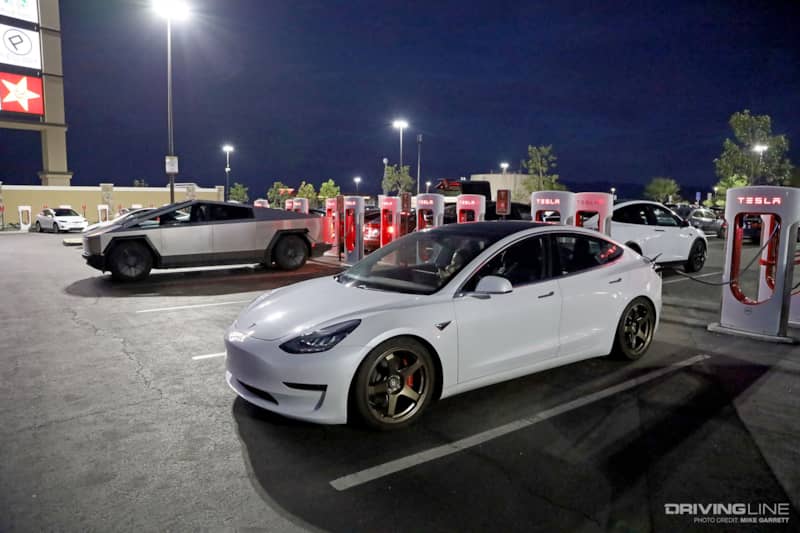
But what about the rest of the performance vehicle experience? The factors like track day capability, handling, grip and most importantly, the fun factor that all enthusiasts are looking for when they buy a car.
It’s some of these areas where the Model 3 platform has the most room for improvement, and it’s here where many enthusiast drivers may find car the lacking out of the box.
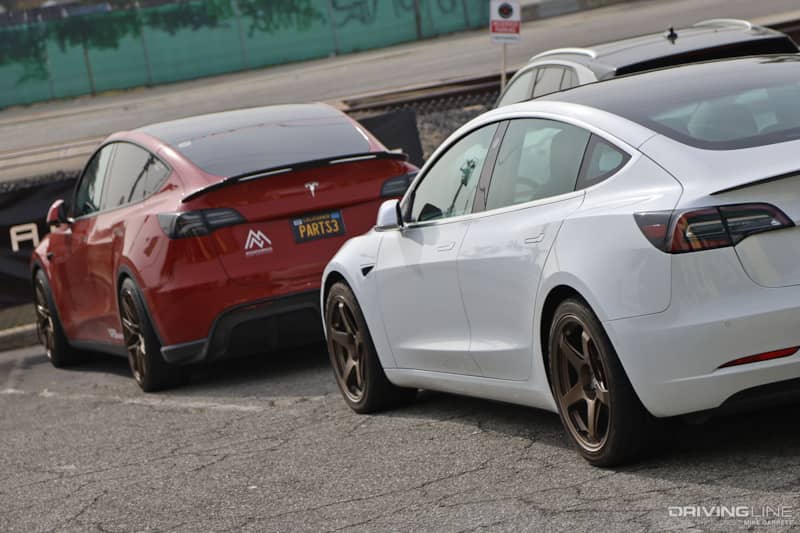
The key words though are “out of the box.” Few cars are perfect right off the showroom floor. And thanks to the aftermarket there are some great, relatively affordable solutions for bringing the Model 3’s handling and fun factor to a new level.
Suspension is Everything
On my own 2020 Model 3 Performance project car, I’d already taken a major first step by swapping out its stock 20” wheels and tires for a set of wider, lighter and stickier 19”x9.5 Titan7 TC-5 wheels with Nitto NT555 G2 tires.
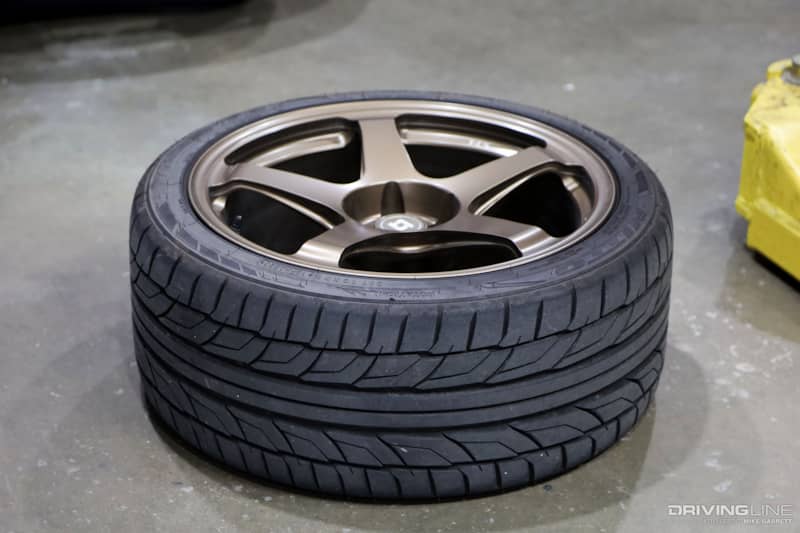
The next step then, would be to address the suspension—specifically the excess body roll, suspension softness, and lack of cornering bite the Model 3 has in stock form.
This is where Mountain Pass Performance comes in. This Canada-based company has become a world leader in the Tesla enthusiast space, offering a a variety of suspension, chassis and cooling parts for all Tesla platforms.
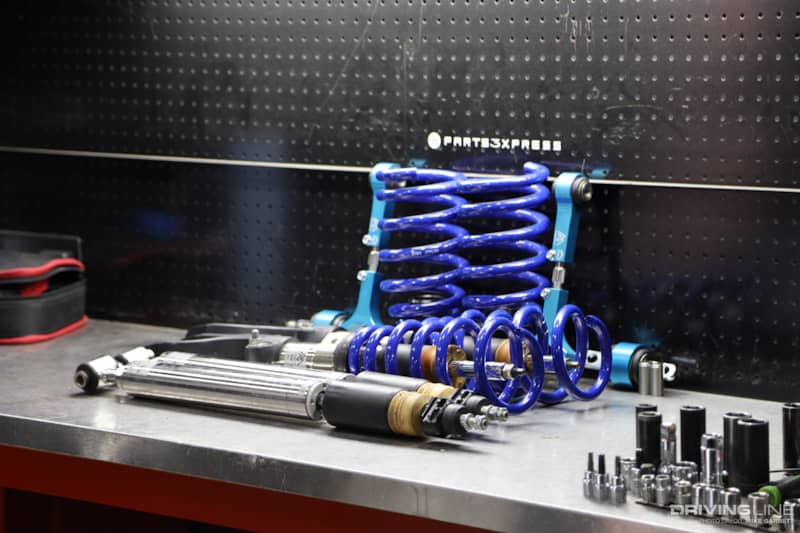
Beyond that, Mountain Pass has taken an active role in building a global the Tesla track day community, claiming numerous EV lap records and even creating a Model 3 spec series that runs at the GridLife events.
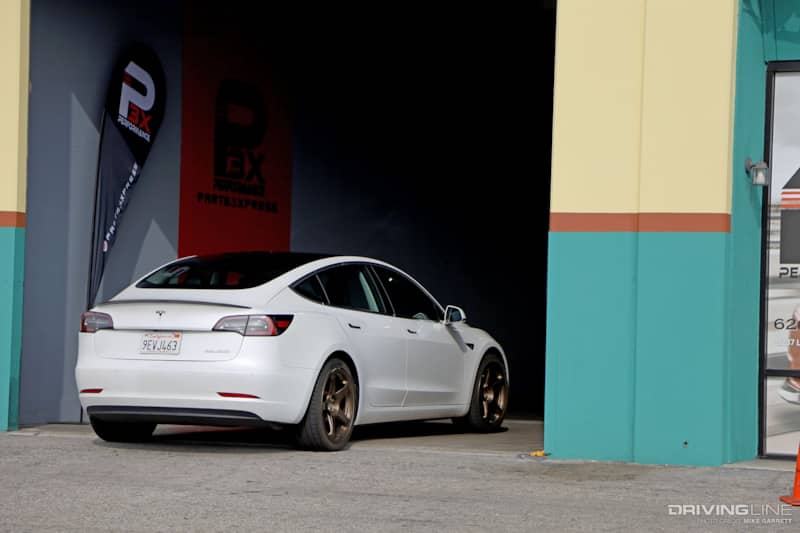
After speaking with Mountain Pass founder Sasha Anis about my plans for the car, he recommended a basic setup consisting of their MPP Sports Coilovers, solid front control arm bearings and adjustable rear camber arms.
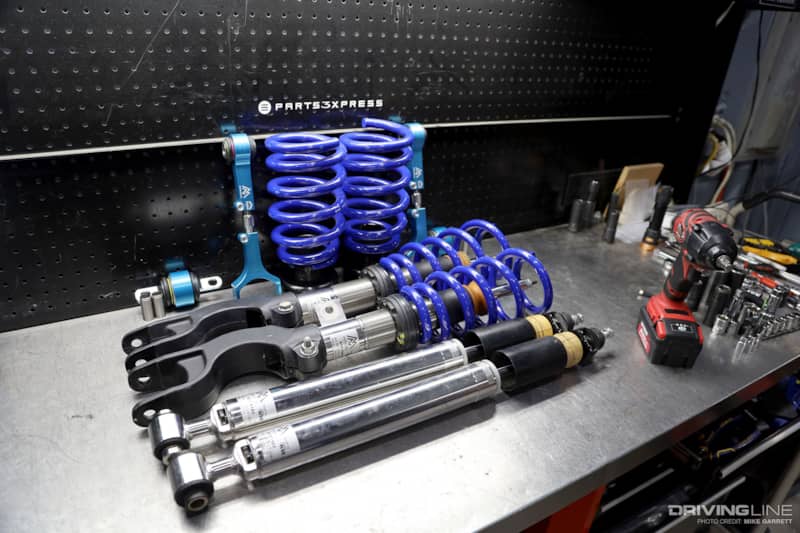
The Goods
With the parts in hand, I arranged an install day with MPP-dealer and Tesla specialty shop P3X Performance in Temple City, California.
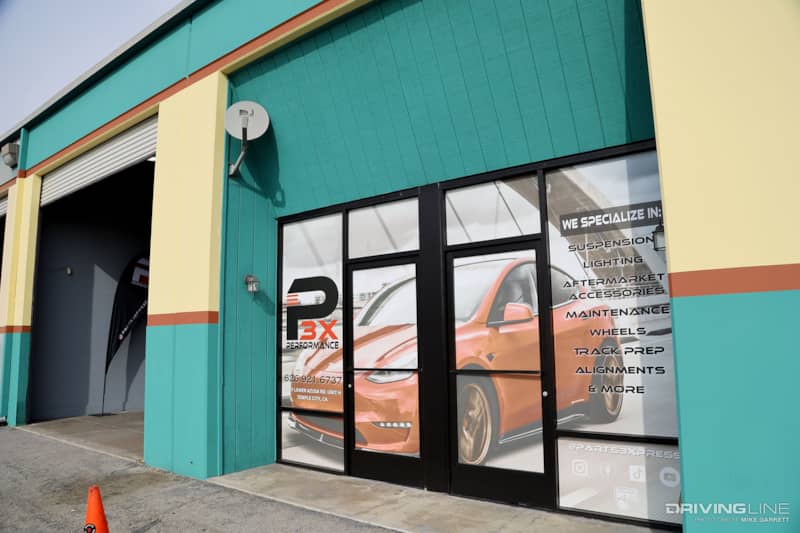
More than just a shop selling aftermarket Tesla parts and accessories, P3X caters to the growing Tesla track day community in SoCal, doing not just parts installs but alignments and track prep.
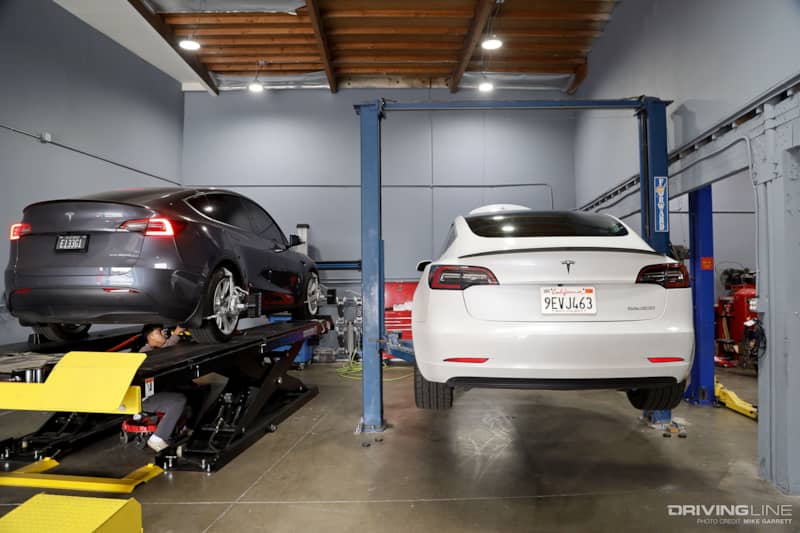
Let’s take a closer look at the parts. First the coilovers. Developed in partnership with KW, the MPP Sports coilovers bring you adjustable ride height along with adjustable rebound and compression.
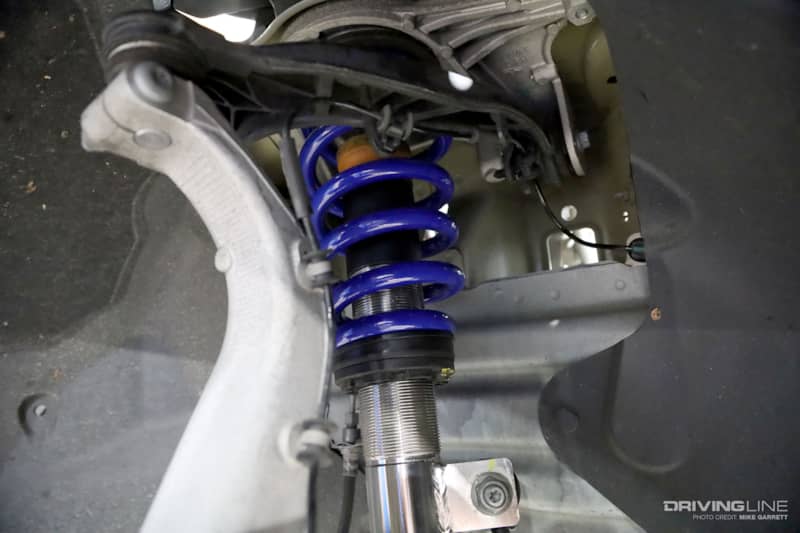
That means of course, they can be dialed in for all types of driving and/or track situations, with the overall result being much-improved handling and body control without a major ride quality tradeoff.
And when lowering the Model 3’s ride height, the MPP adjustable rear camber arms are essential, allowing you to correct the natural negative camber that comes with lowering, or quickly and easily dial in additional camber for a track setup. They also have sealed spherical bearings for improved steering feel and driver feedback.
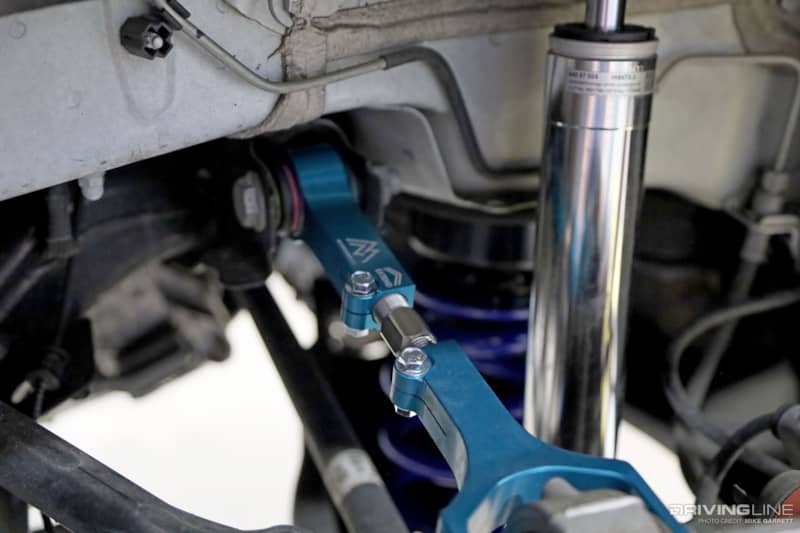
Last but not least, are MPP’s solid front lower control arm bearings to replace the factory rubber bushings, which are known to wear quickly on Model 3s, especially those that see track use.
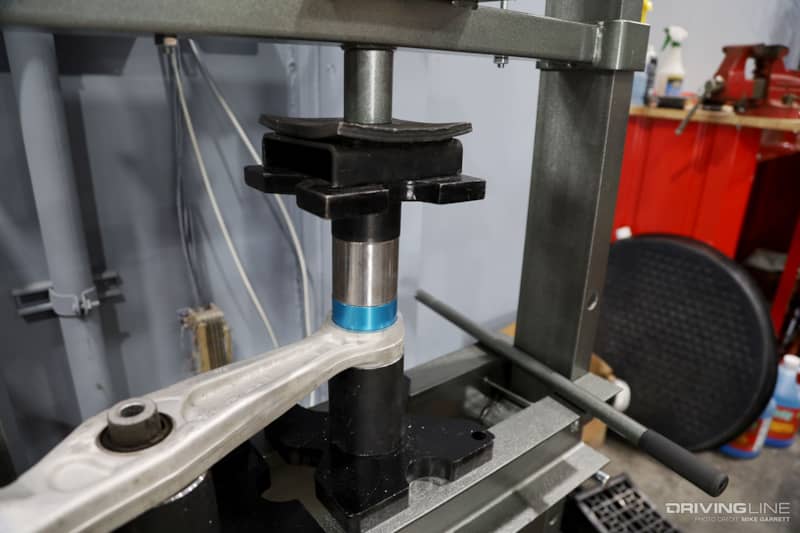
Considered one of the best bang for the buck upgrades for the platform, the new bearings greatly improve turn-in, front grip and feedback. All while being infinitely more durable.
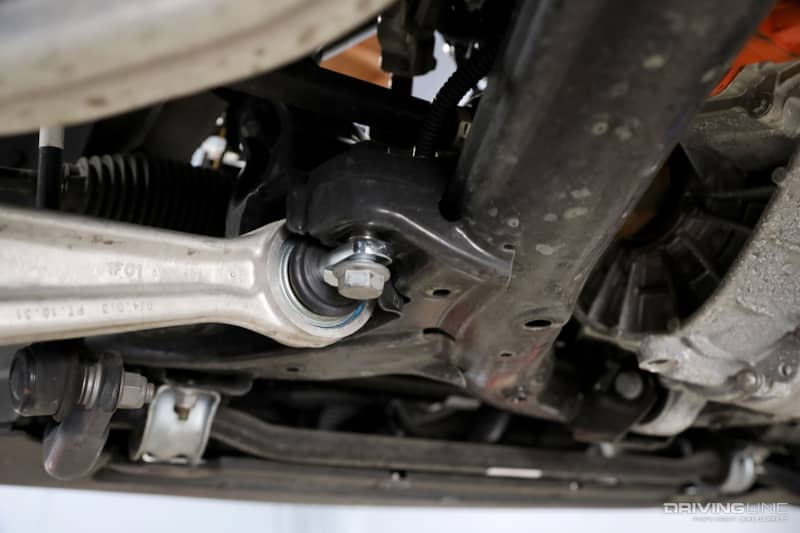
Dialed-In
Compared to a typical internal combustion car, there’s nothing abnormally exotic about working on Tesla suspension that would stop a DIY type from doing this job. But P3X Performance are experts in the field, working on nothing but Teslas all day long.
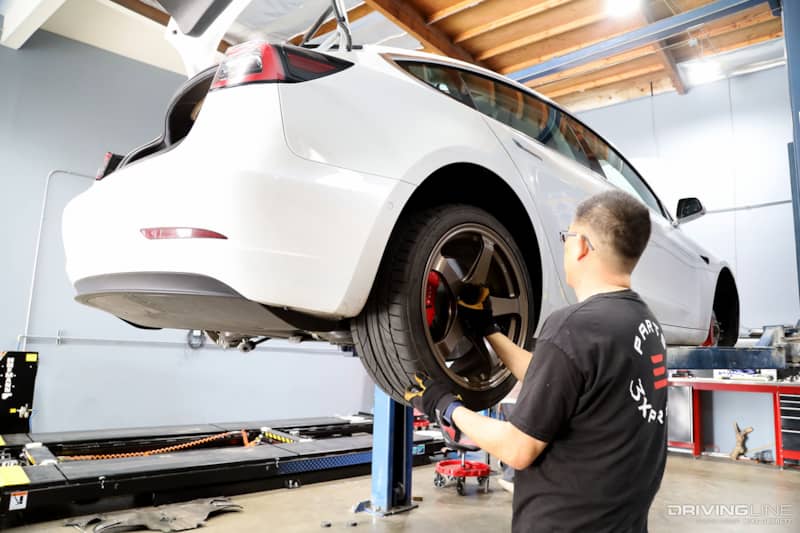
Being deeply familiar with the MPP parts catalog, it took only a couple hours to put the coilovers on, press in the new control arm bearings and install the rear camber arms.
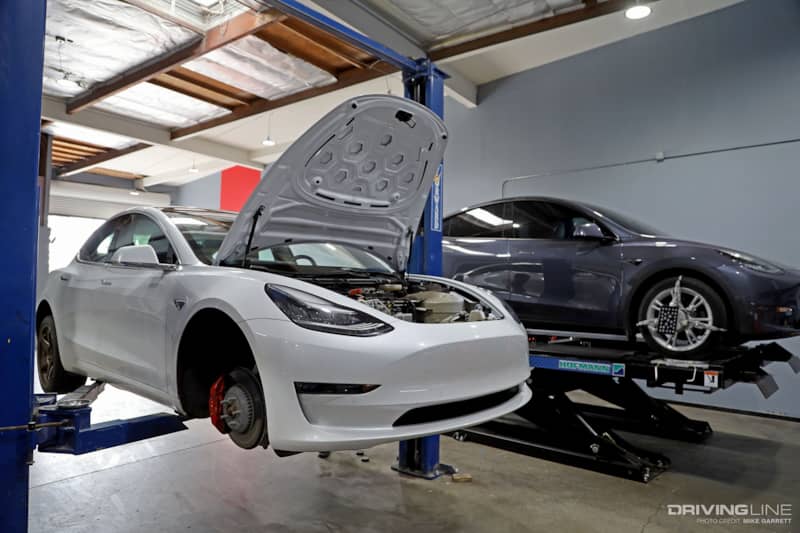
Taking advantage of the wide adjustment range of the MPP coilovers, we set the ride height with a drop around 1.3 inches lower than stock, with out of the box settings on the dampers. After that was the all-important alignment.
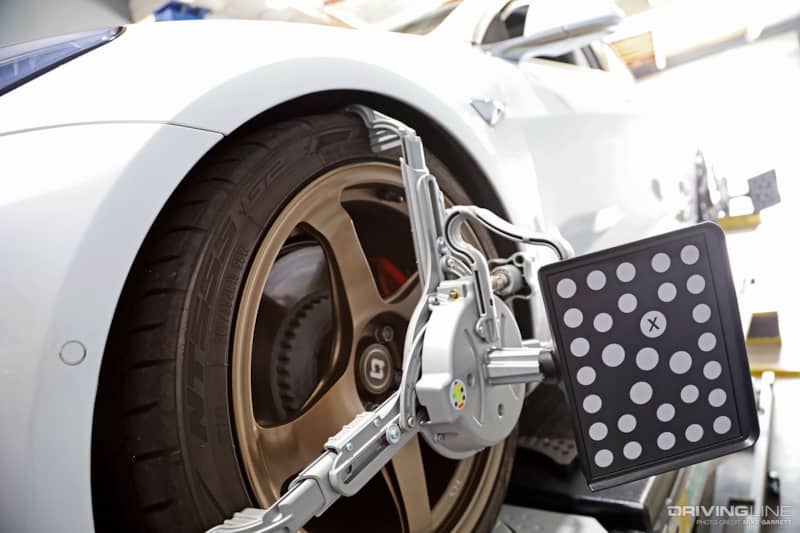
Not only is an alignment important for any car that’s had its ride-height changed, P3X is an expert in Tesla track-spec alignments.
After talking with P3X owner Wilson Tam, who tracks his own Model Y Performance regularly, we settled on a a balanced alignment setup that can handle both daily driving and weekend track days.
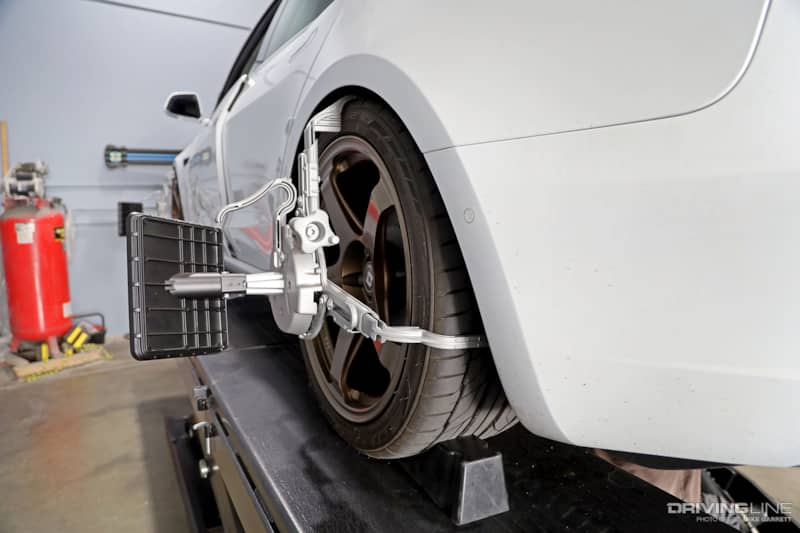
On to the Track
When I first got a look at the car post-install, I was simultaneously in love with aggressive stance while also being slightly worried that the car would ride too stiff.
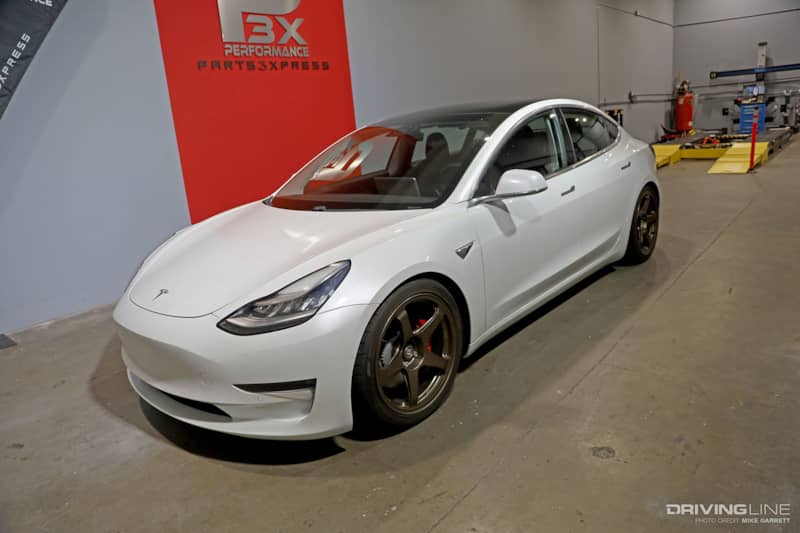
Those worries were all for not though. After getting behind the wheel, at first I couldn’t even tell anything had been changed in terms of ride quality.
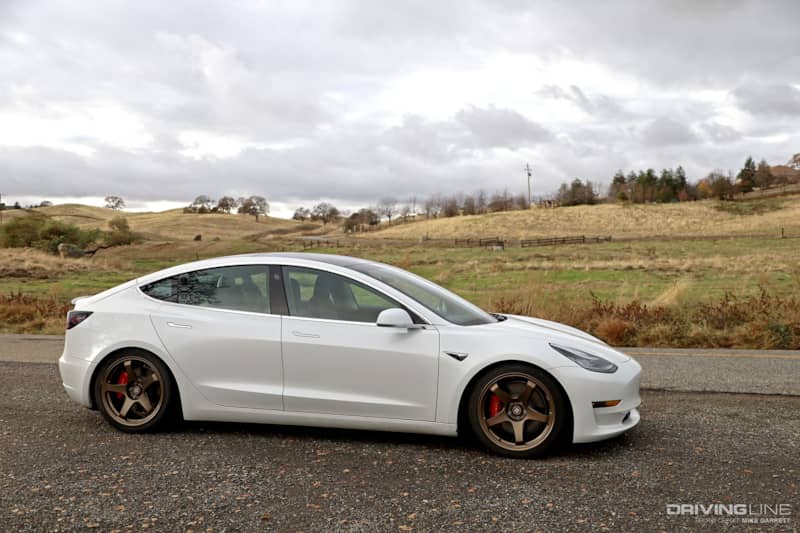
After getting some more miles on the car, it does ride ever so slightly stiffer than stock, but nothing you wouldn’t find in any stock, modern performance car—including my Toyota GR Corolla.
More importantly, the body roll is essentially gone, there’s a lot more communication from the front end, and the twisty road driving experience now befitting of a true enthusiast-grade automobile.
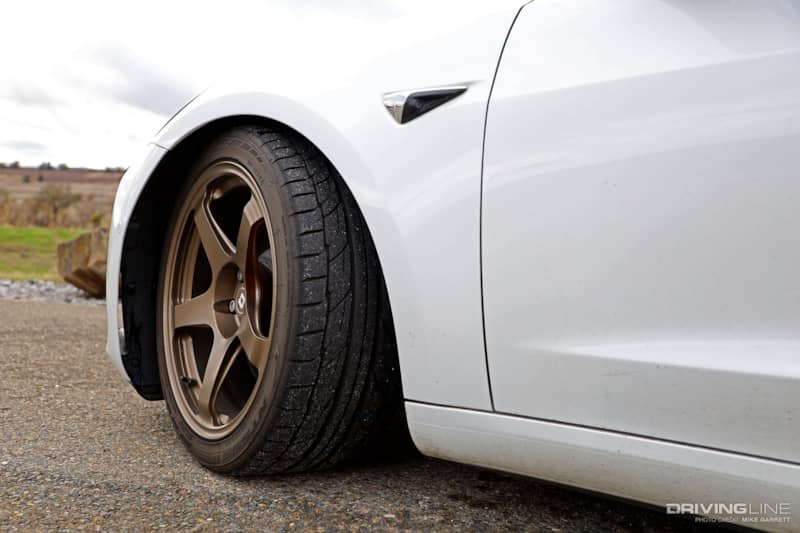
Does it have the same sensations as a manual transmission, gasoline engine sports car? No, and it never will. This is a different kind of fun, and that fun factor just got a lot better.
And then there’s the new stance of course, which combined with the wheels and tires gives my run-of-the-mill white Model 3 a lot more personality and helps it stand out from the sea of Teslas you find on California roads.
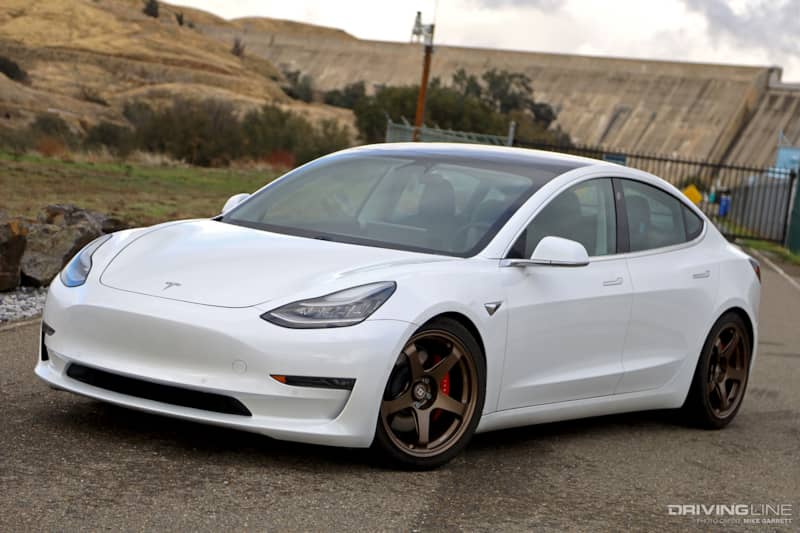
With all of this done, there’s just now one thing left to do. Change the brake fluid, perhaps the front pads and get ready for the track.
2024 goals. Let’s go.
More From Driving Line
- Here's how the Model 3 Performance stacks up against similarly priced gasoline rivals.







